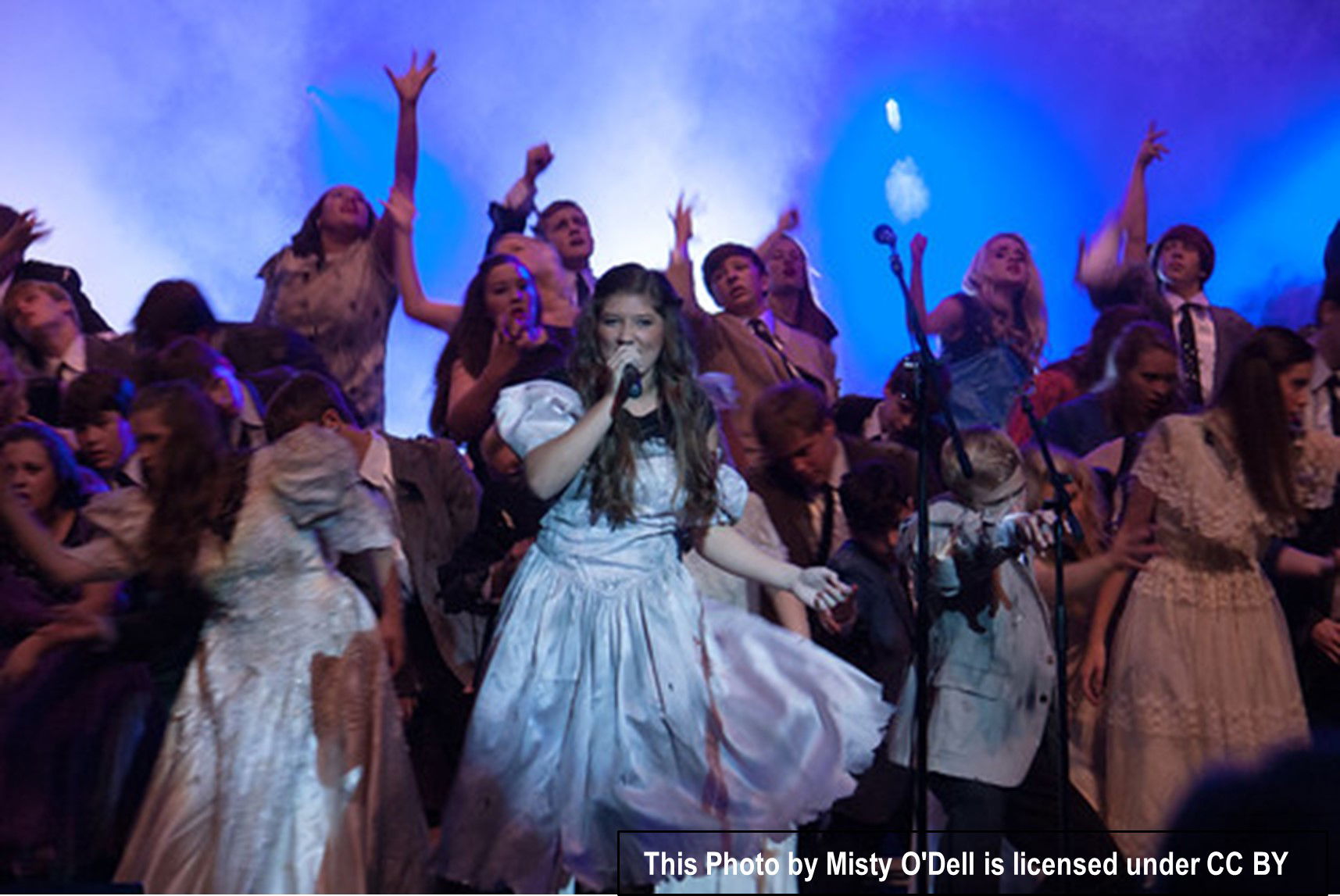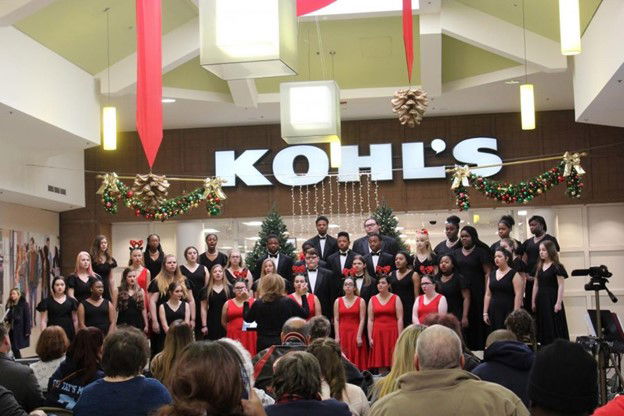Finding New Members for Your Choral Group

Choral ensembles for high school age students not only enrich the cultural experience but also foster a sense of community and creativity. If you're looking to expand and enhance your high school age choral ensemble, effective recruitment strategies are crucial. Here’s a comprehensive guide with strategies for successfully attracting new members and growing a vibrant choral community.
It has become increasingly difficult to attract students to music ensembles of any type, especially to more “classical” ones like choral groups. The culture has encouraged young people to become mere consumers of music that is more and more about the performer rather than the quality of music. Objective standards of beauty and value have been overshadowed by how the music makes one feel, and those feeling have become less and less honorable.
Certain types of music, such as jazz, has fallen out of popularity because most jazz musicians are still concerned about the quality, depth, and art of their music, rather than the cult of personality that seems to be entrenched in modern society.
Even among church music programs, the quality of real musicianship has been sliding in many locations. Where a variety of instruments was once common, the same group of rhythm instruments is now primarily the ones being heard.
For that reason, a choral director should not be too discouraged if the choral group is small. If it has a good balance, a chorus of 24 singers will offer those students a golden opportunity that their consumer-oriented counterparts will miss, and the choral director should be satisfied and delighted with that accomplishment.

Understanding the Vision:
First and foremost, define and communicate the vision of your choral ensemble. Highlight the benefits of joining, emphasizing the opportunity for personal growth, teamwork, and the joy of music. Craft a message that resonates with the potential members, sharing stories or testimonials from existing participants to provide a real-life perspective.
Is this ensemble a more traditional choral group, with four parts, SATB, singing standard and modern classical pieces? Or, is it an all-male or all-female group? Perhaps there aren’t as many guys wanting to sing, so you have a SAB group? You might even have a show choir that does pop, rock, and country standards with accompanying choreography and dancing.
Each type has its attractions for different types of singers. A choral director should never be surprised when it’s discovered that one of the most popular girls n school likes opera or the star quarterback wants to join the show choir.

Engage Through Outreach:
Make use of multiple avenues for outreach. Collaborate with the school’s guidance counselors, music teachers, and other faculty to spread the word about the choral ensemble. Excitement among the faculty can generate excitement among the students, especially if the teachers have goo rapport with the students. It would work wonders if the teachers and staff could share their (good) experiences from singing in choral groups of any sort, including church and community choirs.
Host informational sessions or workshops that showcase the ensemble's achievements and goals, and invite interested students to attend. If the group hasn’t won any tangible awards, perhaps a few well-chosen recordings of past concerts, or live demonstrations of the best of the current repertoire would work, especially if it’s an assembly or after-school “event”. The group may have the goal to appear on some larger stage in another town, state or country. This incentive may help change the minds of those who can’t decide whether to join or not. If you’re trying to start a group from scratch, the only thing you may have to offer are objectives, goals, and plans. You may be able to show videos of other groups singing what you hope to sing and how you hope to do it.
Engage with local middle or junior high school music teachers to promote a seamless transition for students already interested in music. In larger districts or schools, this may involve quite a few teachers. But, the plus side for the lower grade teachers is that they can have bragging rights that the success of the high school age group was built on their expert foundation. In smaller schools and districts, the middle school teacher may be one and the same. In that case, he or she may want to enlist the help and cooperation of the elementary school music teachers. Music education almost can’t start soon enough!
Utilize Social Media and Online Platforms:
In today’s digital age, social media is a powerful tool for recruitment. Create engaging content about your choral group, sharing performance clips, behind-the-scenes footage, and testimonials. Encourage current members to share their experiences on various platforms. Additionally, design a user-friendly, informative webpage that provides details about auditions, rehearsals, and the overall vision of the ensemble.
A number of social media posts could be about the number of successful rock, pop, country and rap singers who have had classical training and experience. There are quite a few websites with lists and examples of these people. Some of the singers include:
- Katy Perry
- Charlie Puth
- PSY
- Ed Sheeran
- Lady Gaga
- Freddie Mercury
- Kelly Clarkson
- Annie Lennox
- Nicole Scherzinger
- Elton John
- Jason Derulo
- Bebe Rexha
- Alicia Keys
- Roberta Flack.
Many of these have shared that, not only did they get good vocal training, but the knowledge and experience gained from their classical training also helped their instrumental playing and song writing.
Sometimes, local celebrities who have made the journey of “classical-to-pop” music might be persuaded to come speak to the student body, after doing a few songs, to describe the benefits and sense of accomplishment that come with belonging to a traditional choral group, including knowing how to work well with others, being able to listen to and adjust to another’s singing and playing, and sharing the triumphs and shortcomings with others.

Host Open Auditions and Workshops:
Plan open auditions to allow potential members to showcase their talent in a friendly and encouraging environment. Keep the process welcoming and non-intimidating to attract diverse talent. Open auditions could even be disguised as a talent show. It may take some money, but food and prizes could be offered.
Consider hosting workshops that offer vocal training, tips on sight-reading, and information about the choral experience. This not only helps potential members feel prepared but also gives a glimpse into the supportive and educational nature of the group.
Create Mentorship Programs:
Establish mentorship programs where existing members can guide and support new recruits. This not only helps in skill development but also fosters a sense of camaraderie and belonging. Pairing newcomers with experienced members can ease their integration into the ensemble.

Showcase Performances and Achievements:
Highlight the achievements of the ensemble through performances, competitions, or community events. Showcase these accomplishments in school assemblies or concerts. Some public stages may be available to the group, such as business openings, community events, even shopping malls (which are thriving in many areas!). Often, students don’t know what talent their choral group peers have and how trendy choral singing can be, especially if it offers the chance of a pop/rock/country career later. Word-of-mouth promotion by attendees often serves as a powerful tool for recruitment.
Maintain Communication:
Consistent and clear communication is key. Regularly update interested students about upcoming events, rehearsals, or any changes. In many educational settings, school and homeschool, elective classes can be switched. Offer to help interested students leave one elective so they can join the vocal ensemble. Encourage open dialogue and provide opportunities for prospective members to ask questions.
Encourage Inclusivity and Diversity:
First, an important word about Inclusivity and Diversity. They both must be legitimate. The words are used so much these days to include anyone who claims to be, do, or know anything they desire. In the case of a choral group, the director could not Include such Diverse individuals as bullies, those who could not sing or read music, those who might join just to erode the group from the inside or those who would insist on the group behaving a certain way to please themselves.
With that in mind, a director of a choral group could then create an environment that welcomes and celebrates diversity. Ensure that all students feel valued and respected, regardless of their background or skill level. A welcoming, inclusive environment can attract a broader range of participants.
Be sure that interested potential singers know that your group sings music from different cultural, racial, ethnic and national origins; that it sings music of different styles; and that it encourages a high musical standard without seeming aloof or vain.
Utilize the Power of Testimonials:
Encourage existing members to share their experiences through written testimonials or video clips. Personal stories and endorsements can be influential in attracting new members.
Some schools have a morning “TV Show” in which announcements, school sports scores, upcoming holidays and the like are shared. Having a few spots on such a program scattered throughout the week in which current choral musicians share what it’s like to be in their particular vocal ensemble can help boost membership in that group, particularly if it’s done toward the end of the semester or school year when students are making decisions about their electives for the next semester.
Conclusion:
In effect, these strategies amount to making the choral group “cool”. Just a Personal Note Here: When I was in high school, the junior-senior choir had about 200 members. The combined enrollment for 11th and 12th grades was less than 400. It was considered one of the “cool” classes, partly because of the teacher, but partly because there were more than a few student athletes, band members and National Honor Society members. The group had attracted and welcomed and included a legitimately diverse group of students.
Personal Story: At one of the teacher’s conventions I had attended, one of the seminars was about how to motivate disinterested students. The clinician said that she could make the session extremely short by telling us all we needed to know in two words. To answer the question, “How do you motivate a disinterested student”? the answer is, “You can’t”.
Sometimes, the atmosphere in a group of students has been in such a state that music groups of any sort are considered “uncool”, and it may take a while to change that mindset. One of the things that got me interested in symphonic music was a visit by the Pittsburgh Symphony Orchestra to our high school. They played some traditional symphonic music. Then they played some pop tunes. It made me develop and interest in the variety of ways that instruments can be used. Violins can also be fiddles. Bassoons can be serious or comical. Trumpets can be brash or sentimental. The same can be said for voices. There is more than one way for a person to sing, more than one type of sound to be sung.
It may take a visit by a choral group that can sing music from the Gregorian era to a current pop tune. If they are done with the same high quality of musicianship, it may begin to erode the negative attitudes.
Recruiting members for a high school choral ensemble requires dedication, creativity, and effective communication. By implementing a multifaceted approach, including outreach, social media engagement, open auditions, mentorship programs, and showcasing achievements, you can attract enthusiastic members to create a thriving, harmonious choral community. Remember, nurturing a welcoming and inclusive environment is just as important as the music itself in creating a successful and fulfilling choral experience.
By following these strategies, your choral ensemble can flourish, offering an inspiring and rewarding musical journey to all who participate.
Salt Cellar Creations understands the challenge that maintaining a good Choral Ensemble can entail. We have a growing library of original works and arrangements of pop and traditional works. Find out more about what Salt Cellar Creations has to offer for Choral Groups HERE. Explore the available music HERE.
SCC can also compose an original piece for you or do a custom arrangement for you. There are two ways that this can be done; one is much more affordable than the other. And SCC is always looking for ideas of pieces to arrange or suggestions for original pieces.
We have sold music not only in the US but in Canada, the United Kingdom, France, Australia, New Zealand and Austria. Please visit the WEBSITE or CONTACT US to let us know what we can do for you!